

First of all, if you want this game to play nicely on a modern system, make sure to get the Neonix patch. Even with that one, there will be issues with frame pacing, but limiting FPS alleviates those at least somewhat. IGI 2 has one play as David Jones, a British covert operative, yet one quite unlike a certain other fictional British spy. As Jones, you're able to run, crouch, or go prone, can handle all kinds of guns and a knife, and even do silent takedowns. While a stealth approach is encouraged, Jones often enough can or even has to go guns blazing, too. Each mission tasks one with multiple objectives such as gathering intel, stealing objects, or neutralizing targets. While the order in which these objectives are tackled is fixed, the player can approach each mission as they see fit otherwise: the mission areas are often impressively large, and you're free to go and do whatever you want, as long as the objectives are fulfilled. To reach those, you have a satellite map computer at your disposal, which shows the position of any guards, and a thermal scope, which even allows seeing through walls. These tools are badly needed, as IGI 2's stealth system is fairly rigid. Guards have superhuman hearing and can easily tell whether any noise is made by British boots, yet they struggle to see Jones if he goes prone roughly 15 feet away. Accordingly, most missions do not permit a ghost approach, yet at the same time, you're only given a silenced pistol with limited ammo. Once that runs out, you basically have to use unsuppressed weaponry, at which point the alarm will sound and force you to gun down dozens of bad guys. The fact that you're only allowed to save three times at normal difficulty only adds to the challenge and tension, as you'll be hunted relentlessly whenever stealth is broken. Still, the freedom of expression IGI 2 grants to the player is still remarkable to this day, and the plot, while basic, is interesting enough to keep one hooked throughout.
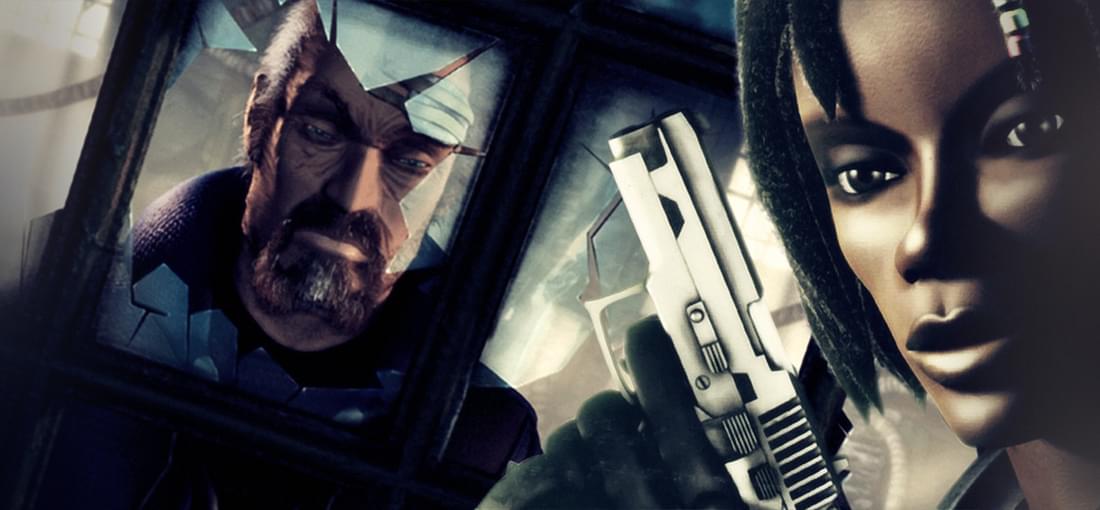
Often described as an early precursor to GTA 3, Urban Chaos has one play as a young female cop tasked with fighting crime. While the game takes place in a large open city, it is mission-based, so you don't get to traverse the entire city at any point. The basic gameplay loop consists of going somewhere and either killing or arresting bad guys. Occasionally, you also get to drive around, but since the cars control horribly, you'll be glad to be on foot. Unfortunately, the game is marred by a plethora of issues and weird design choices. For instance, there is no music in the game, except when sprinting. Why does music play only when you sprint, and why is it always the same track? Then there is a mechanic where every 20 seconds, a mugger will get spawned and seek out your location to beat you up. Why? Unclear, and it is simply annoying having to deal with dudes that track you relentlessly even across roofs all the time. Speaking of roofs, instead of pursuing mission objectives you'll often find yourself going across roofs to find powerups, which are hidden all across town. These provide permanent stat boosts, which you definitely need to survive against the tougher foes. The problem is that the controls are clunky and imprecise, making these jumping parts more annoying than anything. And to add insult to injury, you cannot save during missions. More often than not, you'll be picking up stuff and fending off muggers for ten minutes only to die during the actual mission, requiring one to restart the entire level. Not fun. The game has a certain charm to it, and I like both the setting and the colorful graphics, but my patience was wearing thin rather quickly with all the design flaws the game has. Add the fact that graphical issues such as missing textures are frequent, and you'll quickly wish to be playing something else instead.
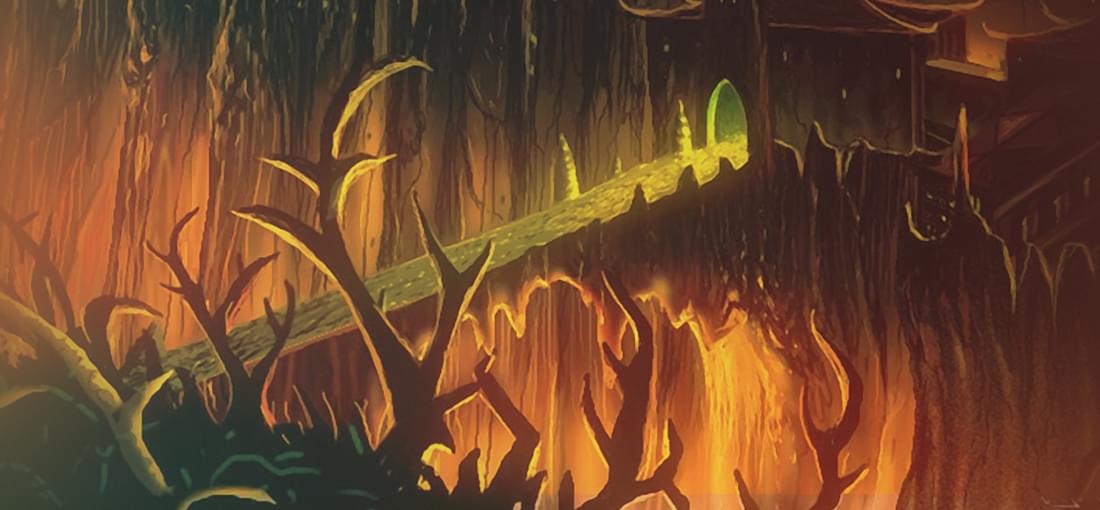
First of all, if you want to play this without issues, make sure to use the software renderer. Glide feels off and is restricted to an aspect ratio of 4:3, whereas Direct3D shows no videos or menu animations. Using the software renderer and a widescreen resolution of 1600x900, the game looks and plays great. TA Kingdoms has always had a burden, namely the "Total Annihilation" part, which came with certain expectations. Kingdoms didn't really meet those, as many key elements of TA were missing. You still construct resource gathering sites on dedicated deposits, but there is only a single resource, and things such as height advantage, sightlines, artillery fire using the radar, and so on are mostly absent in Kingdoms. That doesn't mean that Kingdoms doesn't have its own qualities, however. The fantasy scenario, which is pleasantly removed from the usual WarCraft and Lord of the Rings tropes, gives the player four rather diverse factions (five with The Iron Plague), each which their own wholly distinct (and often plain cool) units. The story is told through a length campaign interconnected through cutscenes, which has one take on a different faction every few missions. Much like in TA, the presentation is rather sober, though Jeremy Soule's excellent soundtrack once again helps create an enthralling atmosphere regardless. The main flaw with the campaign is how easy it often is, rendering many missions a bit boring at times. The Iron Plague addresses the difficulty issue and then some. Even the first few missions will already test one's abilities, and require the player to have mastered all the mechanics the game has to offer. Due to its unreleting nature, the Iron Plague finally plays more like a proper TA, and certain mechanics such as unit experience finally become important—for instance, throwing troops against defense structures is a bad idea, as they'll only get stronger with every kill. In short, if you like TA or fantasy RTS in general, do give this a try.
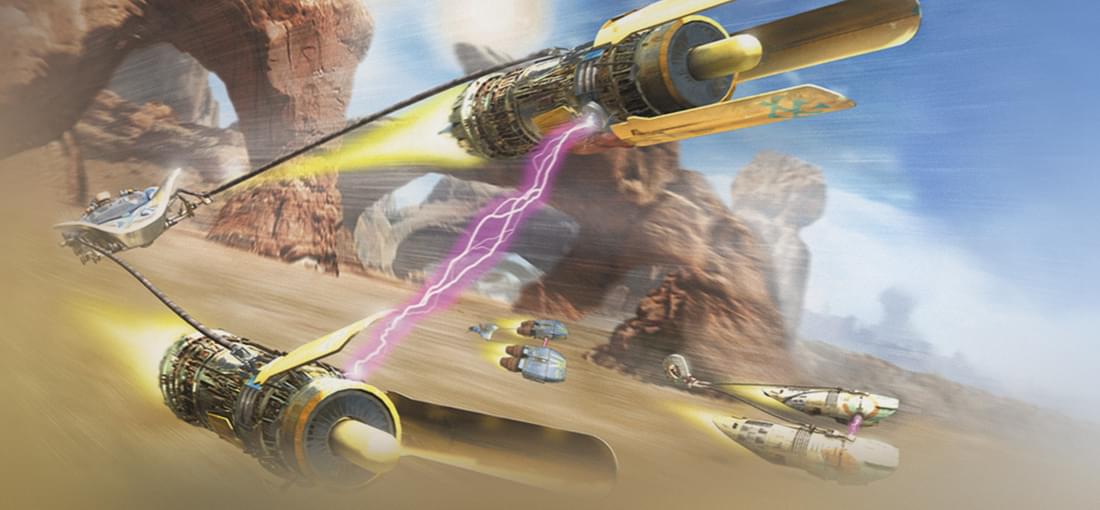
Admittedly, I'm not exactly a neutral arbiter on this game. I really like Star Wars, and I really like podracing. Still, Episode 1 Racer has plenty to offer for all fans of high-speed racing games. Obviously, you're racing in pods in this game, across a wide range of different tracks, scattered across several planets. Depending on how well you do in every race, you get money which then can be spent on upgraded parts, and winning a race typically unlocks a new racer. So far, so mundane. What makes Racer special are the tracks and the speeds at which you're racing across them. Basically, every track has segments that reward speed, segments that require control during tight turns, and segments that require reflexes befitting of someone who is force sensitive. When racing at upwards of 600 mph, you only have a fraction of a second to react, lest you crash into the track fences. In general, you want to avoid contact with any objects, as too much of it will make your pod catch fire, necessitating repairs. Racer is not a hard game at all, but maintaining the balance between speed and control stays exciting throughout the entire tournament series of 25 races. As one would expect, the action on the track is further elevated by John Williams's iconic score. Frankly, there is nothing more adrenalin-pumping than racing down a track at 500 mph while being accompanied by Duel of the Fates. Even though there is little fluff between each race, Racer absolutely nails that Star Wars atmosphere. And while the graphics are basic, they're as fluid as they need to be, and I would argue that the limited draw distance is actually a boon, as obstacles popping up seemingly out of nowhere only ups the thrill. On the technical side, I had no issues aside from two crashes while flipping through the racers. A modified executable allowed setting high resolutions at an adjusted FOV. In summary, if you like high-octane racing, Episode 1 Racer will have you covered for several hours of fun.
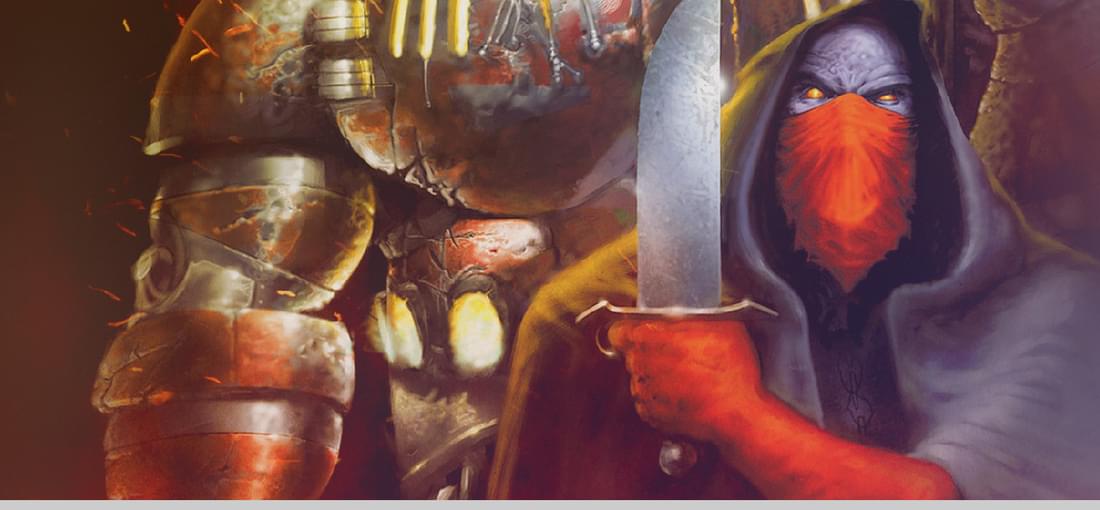
Essentially, Warlords Battlecry (WBC) is the missing link between WarCraft 2 and 3. On the one hand, like in WarCraft 2, workers disappear into the buildings they build, there are land, air, and sea units, and incremental upgrades for all troops; on the other hand, you have a hero unit with spells and an inventory like in WarCraft 3. Still, WBC does enough things differently to where it becomes unique. For instance, the RPG mechanics don't stop at the hero, as there are different damage types, resistances, and mental states like in a proper D&D CRPG, adding to the rock-paper-scissors mechanics typical of an RTS. Impressively, WBC has no less than nine races, all with their (mostly) own units, buildings, and playstyle. Another peculiarity is resource collection. There are four resources, of which each races needs different amounts, and they're only produced in mines, which ought to be captured. Only the hero and a few high-level units can do so, adding an interesting dynamic between having to defend the hero while capturing resources and going on the offensive. In the campaign, one gets to create a hero from scratch, whose stats can be increased inbetween missions when gaining levels. A few select units may also be added to the retinue, essentially forming a party of sorts. While most missions involve base building, some require making do without reinforcements. Whenever the hero or a story character dies, you get a game over, which can be frustrating given how high-level spells and units can often delete a unit's health within a single second. The game can be challenging in general, and after loading a save a couple of times, sounds will stop playing, necessitating a restart. Aside from this bug, I had no technical issues, and the game is still decent to look at, owing to its large and detailed sprites. Overall, if you like fantasy, and have enjoyed the likes of WarCraft 2/3 or Spellforce, you likely'll enjoy this one as well.
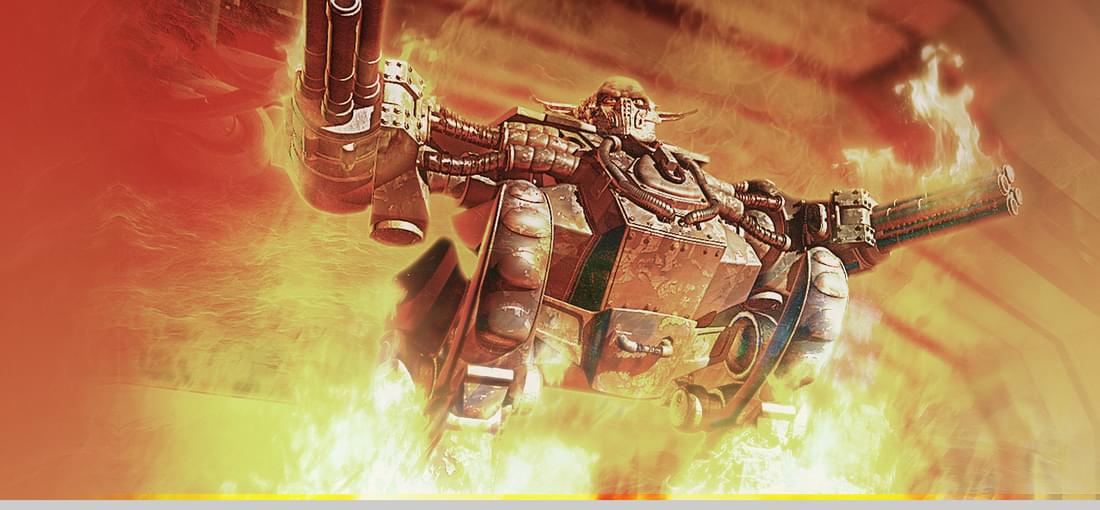
FireStarter has one of the most fearsome foes ever encountered in FPS history: floors. Due to frequent clipping errors, you'll happily run along somewhere only to drop right through the floor, which means game over. You can respawn a couple of times, but sure enough you'll accidentally walk through one of those instant death zones at some point, and once you run out of respawns you need to restart the level, and pray that you somehow dodge the holes in the floor this time around. This single bug renders an otherwise enjoyable game virtually unplayable. I like the music, gameplay, weapons, and original concepts presented by the game, but none of that matters when you basically cannot progress. Instead of refunding (like I did), you're probably better off not buying in the first place.
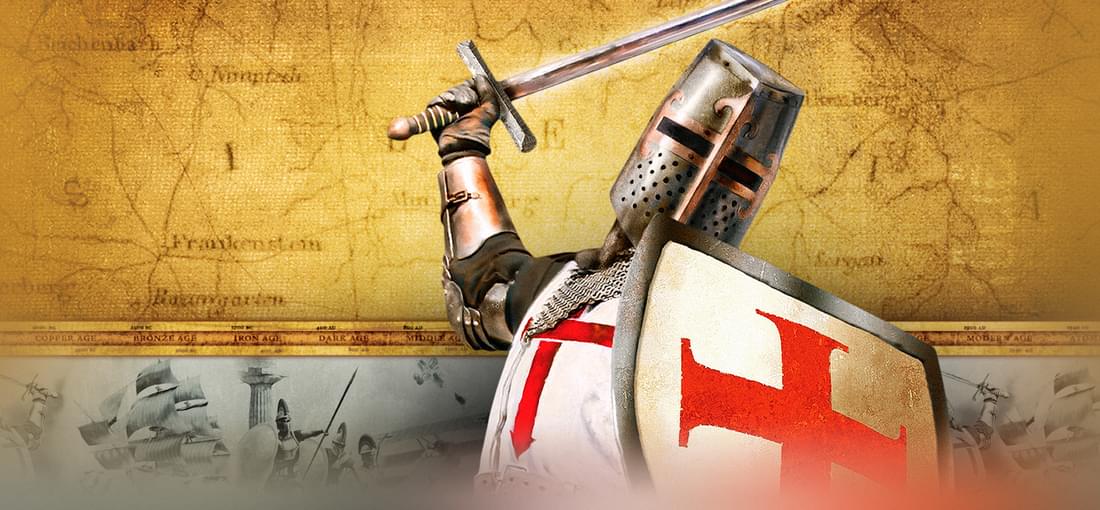
Empire Earth II is an interesting game. On a surface level, it offers layers upon layers of complexity: 15 epochs, different seasons, changing weather that influences sightlines, territories like in Rise of Nations, the ability to draw war plans for allied nations, extensive diplomacy options, troop formations, and so on and on. Ultimately, however, EE2 is a very simple game in practice. Resources never run out, so after assigning enough citizens on all resources to pump out a certain number of units indefinitely, you're basically set. If that number is greater than what the enemy is able to field, then you win. Of course, rock-paper-scissors mechanics exist, but when armies clash at each other, assigning individual targets isn't really possible, and units are largely fodder anyway. EE2 is a war of attrition, and the depth of AoE 2, for instance, is nowhere to be found. That said, this doesn't mean that the game isn't fun. The campaign provides a good level of challenge throughout, especially those missions that shake things up by limiting the player in some way, by making a certain resource inaccessible, restricting unit types or technology, and so on. Going through epochs isn't really a thing in the campaign, which is why one of the more interesting mechanics doesn't really come into play: similarly to Rise of Nations, you need to research certain global technologies before being able to advance to the next epoch, but the technologies you choose not to research are lost forever. In addition, researching all technologies of a category give one additional bonuses as well. As you can see, such little things are what make EE2 unique, and all the basics of an RTS are realized well. While the game runs fine out of the box, using the unofficial patch may be preferable for the QoL and bug fixes provided by it. In any case, even for those who disliked the first Empire Earth, EE2 is at the very least worth a look.
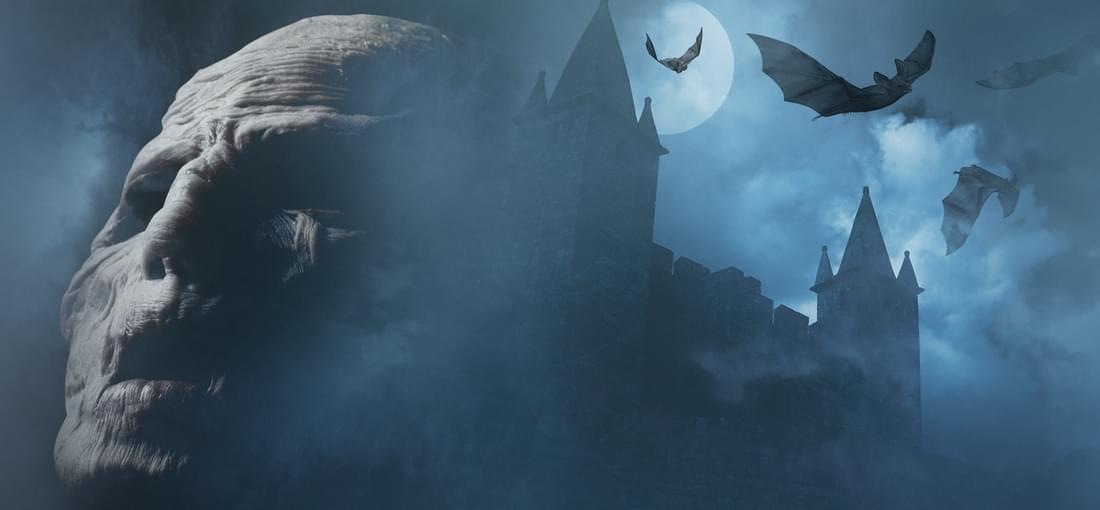
How much you'll enjoy this one will largely depend on your tolerance for jank. If you love jank, then this is an easy 5 out of 5, and you're in for a real treat. If you don't, then you'll likely find that whatever atmosphere the game is trying to create goes right out of the window when you see enemies clipping through furniture, your own character clipping through enemies or solid matter, and similar goofs. The premise isn't half bad actually. Set in a castle that may well be lifted straight out of Murnau's Nosferatu, you arrive at what was supposed to be a wedding, and need to traverse randomly generated rooms to find and rescue your stranded relatives, lest they get killed by all the monsters roaming around. The issue with the procedural generation is the fact that the layouts don't make a whole lot of sense. Often, there is nothing but enemies in a room, so you might as well quickload when that is the case. However, when doing so, enemies often get randomly generated right next to you, adding another layer of jank. Once you've found a relative, you get to escort them back to safety, all the way at the start of the game, in typical 2000s FPS escort mission jank fashion, and you'll be doing that up to 15 times. Obviously, everything looks exactly the same, so have fun getting disoriented. My favorite part was when I was on a roof, and the rescued relative clipped down the roof to his death, in proper jank fashion. The game is neither scary nor challenging at any point, and despite all the padding with dozens of enemies around every corner, you'll find yourself facing the Count in yet another jank encounter in less than four hours. Overall, I can concede that Nosferatu has a certain jank charm to it (grandfather carrying a machine gun in his trunk gave me a chuckle), but if you're asking me if you miss anything if you don't play it, then my answer is no.
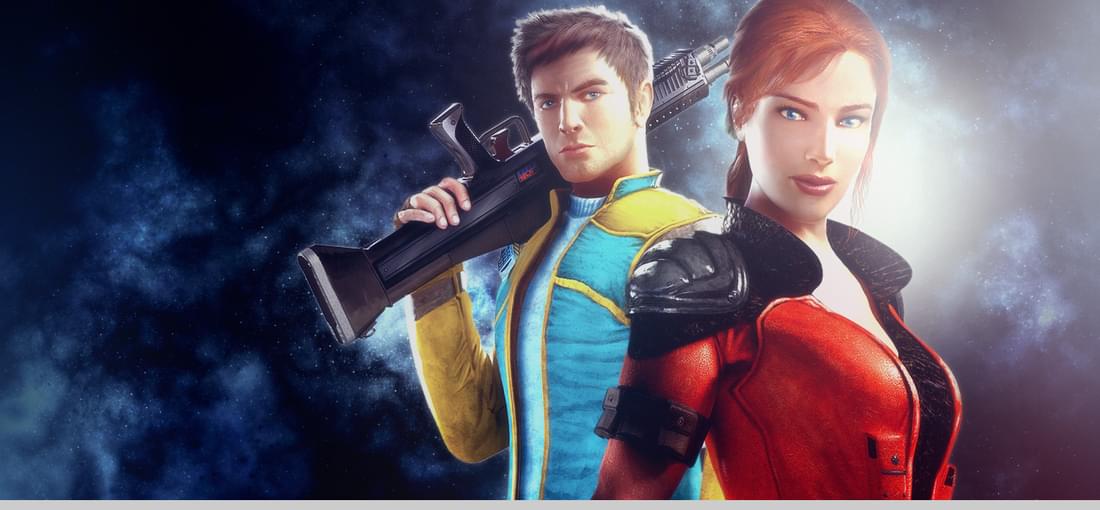
After Freelancer released back in 2003, similar games were very rare to come by. Darkstar One from 2006 aimed to fill that void, but very much fell short. The main issue with the game is how repetitive it is. Even though there are more than 300 star systems to visit, their layout is almost entirely identical: a trade station, an asteroid, a planet, and a warp gate. The colors may change and there may be a research station sprinkled in, but ultimately, if you've seen the first system, you've also seen all the others. The gameplay loop is just as monotonous. Regardless of whether you're doing story or side missions, you'll be shooting enemy ships 99% of the time. While the dogfights are quite entertaining, the issue is that they don't change at all throughout the course of the game. You only get to fly a single ship, the namesake Darkstar One, whose unique trait is its ability to transform through upgrades. These upgrades are given by picking up artifacts, which are gained either by flying into an asteroid (which all look exactly the same) or liberating a system (more shooting bad guys). In addition, you can buy new weapons or ship systems, but since these are restricted by your ship level, ship customization boils down to simply purchasing the best gear currently available, without any thought required whatsoever. The weapons are samey, the enemies are samey, everything is samey. Now, this would be tolerable if the story were good enough to keep one hooked, but that isn't the case. Between poorly voice acted cutscenes and a boring and predictable plot, mustering the motivation to take out yet another squadron of bad guys for some fish looking dude with a ridiculous speech pattern took some actual willpower. The only sort of diversion was provided by Descent-like tunnel levels sprinkled in, though these were more annoying than fun, too. In short, only get this if you're suffering from insomnia.
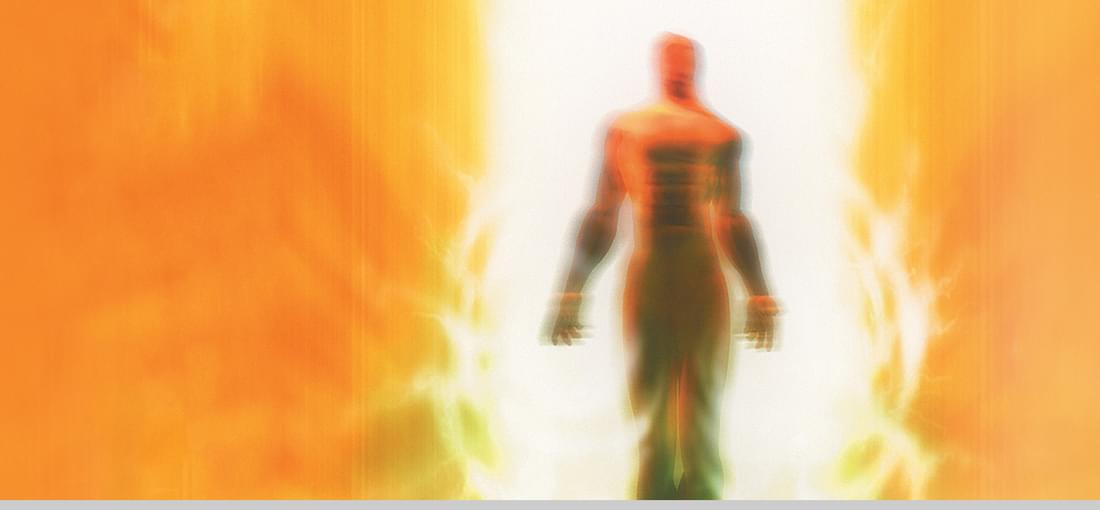
Advent Rising has one play as Gideon, a human pilot soon confronted with an invasion by aliens. Said aliens look strikingly similar to Halo's Covenant, complete with differently colored troops, and the story beats served in the first few hours clearly evoke Bungie's original from 2001 as well. That said, the gameplay is much simpler: you're dual-wielding whatever weapon you pick up, and clear room after room full of bad guys with auto-aim. To prolong combat, the developers like to spawn enemies in front, behind, and sometimes even on top of Gideon, without any animation or anything—they simply appear out of thin air. The mindless shooting is only interrupted by frequent cutscenes, which do a half-decent job at moving things forward, though by the end, the plot dries up completely, as though the developers ran out of time. Roughly a third into the game, Gideon is given what amounts to force powers, allowing him to shoot energy pulses or lift enemies, and from that point on, AR plays more like The Force Unleashed. In addition, one gets to pilot vehicles, whose controls and physics are abysmal. The way buggies bump around is almost comical, especially compared to Halo's Warthog, and the goofiness extends to Gideon's on-foot movement as well. All animations are way too fast, and even though Gideon eventually becomes a god, ground elevations are insurmountable for him, and require special attention by the player. The controls are a mess in general—for instance, when you lock onto an elevated enemy, the camera is centered in such a way that you can't actually see much of the target. Aside from being repetitive beyond belief, the main issue with AR is how buggy everything is. Crashes are frequent, though the game typically at least has the courtesy to save right before them, but this doesn't apply when you get stuck in a wall. When driving vehicles, the sound breaks, and shadows are simply not displayed. This game just screams amateur hour, and clearly is unfinished.